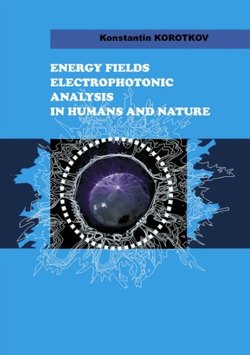Читать книгу Energy Fields Electrophotonic Analysis In Humans and Nature - Konstantin M.D. Korotkov - Страница 30
На сайте Литреса книга снята с продажи.
Can a bird fly across the Atlantic?
ОглавлениеHow does an organism exist and develop? We commonly speak of the number of calories in different types of food products. The main idea seems to be that the more calories we consume, the more weight we gain. Simple Western dietary systems are based on the calculation and restriction of calories. However, after initial enthusiasm for this system and after thousands of pages published on the subject it was discovered that in most cases it simply did not work. An individual organism is much more complicated than an oven, where you can calculate heat produced from the fuel loaded. Some people can eat quite sparingly and stay active and healthy; some need a lot of food all the time. Many families suffer from the permanent hunger of growing children.
On the other hand, we need to ask the question: do we produce physical energy only from food? If this was the case, then how could little birds fly across the Atlantic? Let us make a simple calculation. A direct measurement of energy expenditure for free-flying songbirds migrating from Panama to Canada by using doubly labeled water was reported by a big international group [Wikelski M., et. al 2003]. In accordance with their measurements migratory flight used 15.5 kJ* h-1 total energy while flying, which agrees with predicted values estimated from multiple models and wind-tunnel studies [Lindström Å., et.al. 1999; McWilliams S. R., et.al 2004]. For songbirds, one nocturnal non-stop flight for up to 600 km lasts about 7.7 h, which takes 119.35 kJ of energy. At the same time researchers found by direct measurements that individual birds had roughly the same body weight and fat content in the mornings before and after their migratory flights (6% body-weight loss), no change in fat content. For a 30 g bird, 6% is 1.8 g. Each gram of carbohydrate provides four kcal of energy (16.75 kJ), one gram of fat provides nine kcal (37.68 kJ). Direct transformation of 1.8 g of body mass to energy provides from 30 to 68 kJ of energy. In reality only part of weight loss generates energy, so this number would be even less. As we see, from 119 kJ spent less than half would be covered by body mass. For birds flying through Atlantic for 3000-4000 miles non-stop, these calculations demonstrate that they should have lost more than half of their weight during flight, which they do not. So the typical belief that “a few grams of fat can be enough to fuel a hummingbird or a warbler for a thousand miles over the Gulf and beyond” is wrong. Birds need fat to protect their body from the low temperatures and winds, which they meet at high altitudes, but this fat is not enough to fuel their flight.
